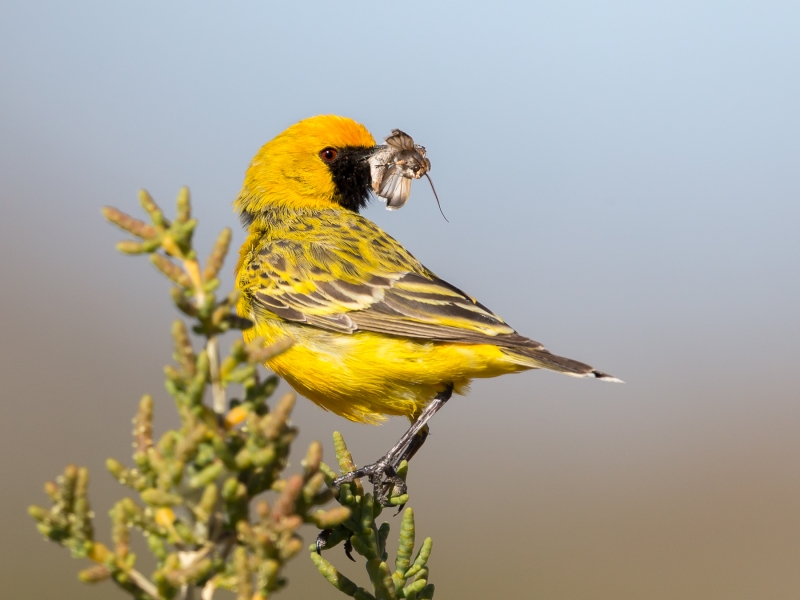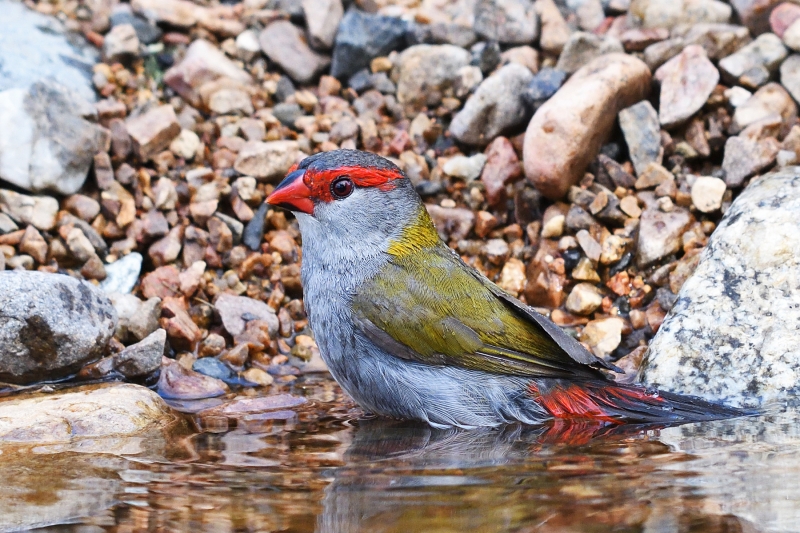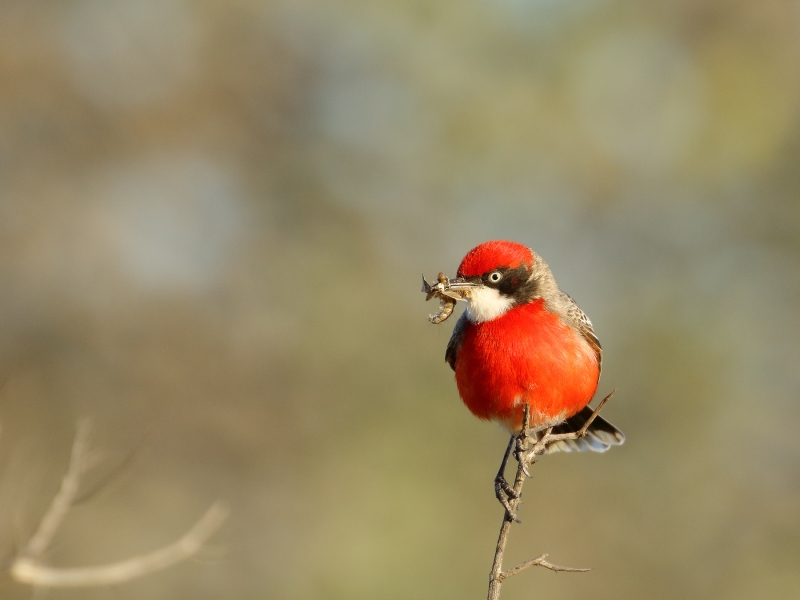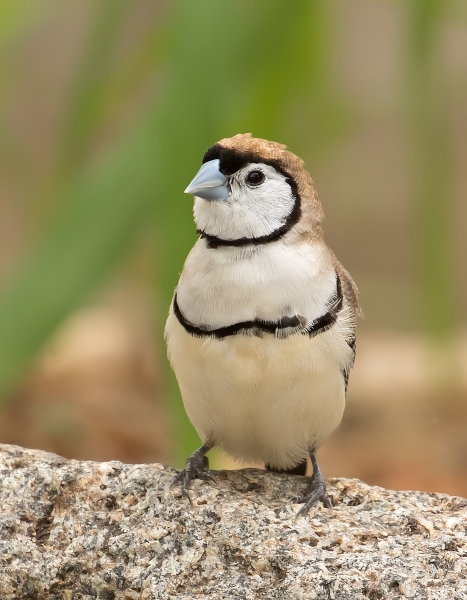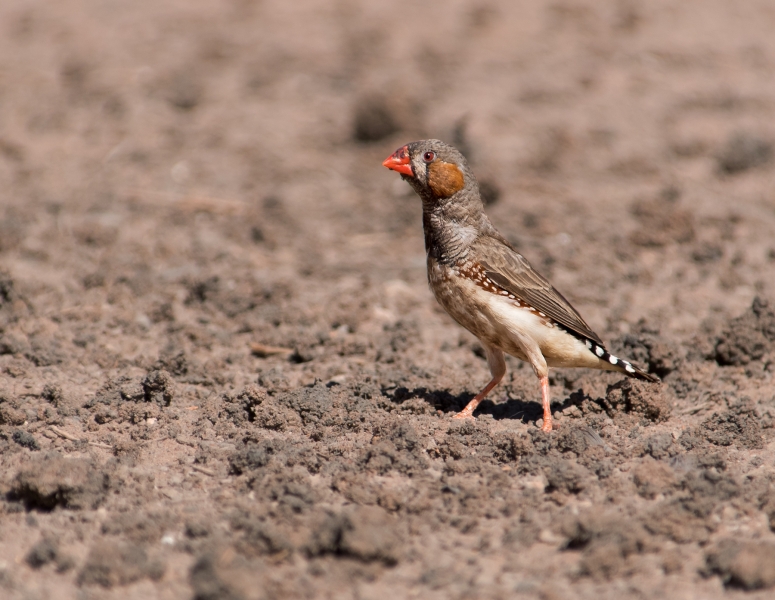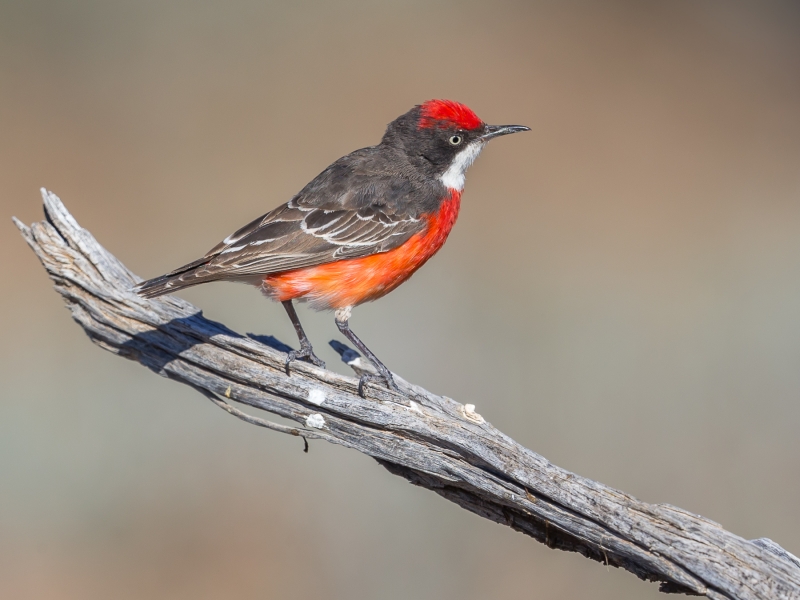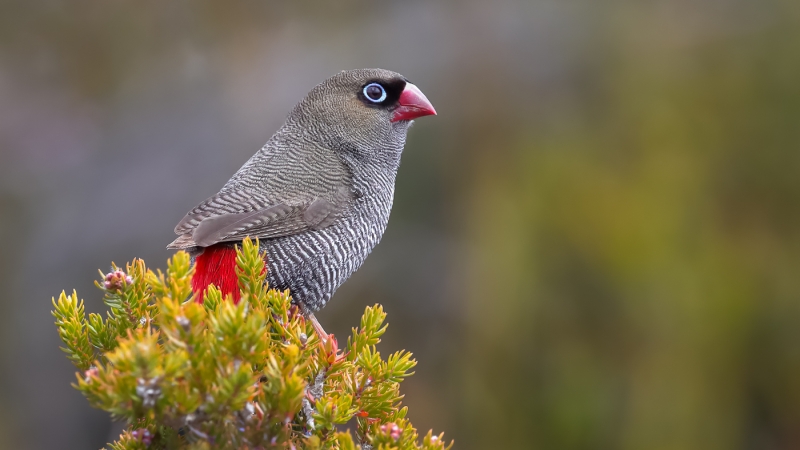The chats did quite a few photographers a favour by perching near eye level in reasonably clear fields. On the other hand, the finches gave lots of issues with vegetation, stray birds mucking up the composition, jittery movement, and even the rocks created significant pictorial issues. I suspect that placing small birds in 1800 pixels added to the challenges.
The result was often a curate’s egg. There were some very good images of the main bird where some excellent work was brought down a peg or two by unruly vegetation, by stray birds that were out of focus, by distractions in the composition, by legs being lopped off, and by poor placement in the picture space.
Thinking about the submissions taken as a general set, I have come up with the following general comments, each with handy hints about how to improve outcomes. Most of these hints would require very little practice to generate significant and consistent improvements.
Lighten up!
In many images in this competition the bird looks too dark.
Handy hint. Start playing around with the stops in the capture and the light slider during processing. If your background and foreground are lighter than the bird, they will tend to make the bird look darker.
Handy hint. Play around with selecting the bird, hitting inverse selection, and then playing with light/dark sliders to see what impact that has on the comparative/contrasting lightness or darkness of the bird. If your bird has a small bit of black then having the black space featureless might well work out OK. A bit of black at one end of the dynamic range can give nice contrast to an image. BUT, if your bird has a lot of black, then having a large black flat space usually does not work well at all.
Handy hint. Suffer for your art.If you are going to photograph birds with a lot of black or black and white in the plumage, get up before dawn to get soft sunlight in the early morning.
Handy hint. Go out when there is thin high cloud light with little or no direct sunlight.
Don’t plonk the bird in the middle!
Birds plonked in the middle of the image usually don’t work well.
Handy hint. Figure out how to freeze your focus and then move the camera around the bird to see what works best during capture.
Handy hint. When post processing, study the spaces around the bird carefully. In general, the tail tip should be closest bit of a bird to the sides. The bird should be looking into a larger space.
Use all your depth of field.
The back third of a bird matters to the bird. It should generally matter to the photographer as well.
Handy hint. This one is easy but it gets you consistent rewards. Do NOT focus on the nearest bit of the bird to the camera. The focus point is at or near the middle of your depth of field, not the start of it. So, you are wasting up to half your depth of field when you focus on the nearest bit of the bird. Try edging your focus on to different parts of the bird – maybe its back or neck. You will learn a lot from trying to focus on the tail.
Dominant Shapes
Big rock shapes will tend dominate a picture space at the expense of the bird.
Handy hint. Do a quick visual check for this issue when composing your image.
And now to the results ...
Winner: Orange Chat, by Linda Unwin (Image ID 40386)
This image has a beautiful treatment of the colours. Lots of excellent detail in the yellows and oranges. The bokeh complements the bird’s colours nicely. Interesting stance – but perhaps a bit high above eye level. Good detail in the prey. A downside is the clump of vegetation which covers a small part of the bird; this is partly offset by yellows in the vegetation that mesh nicely with the yellows in the bird. The image has a high wow factor. The photographer’s comments add to the appreciation of the image.
Commended: Red-browed Finch, by Paul Jensen (Image ID 40169)
Some people don’t like the bedraggled bathing look but I believe it adds to the wonder of a bird’s plumage that the feathers can go from wet and bedraggled to smooth and contoured. Lots of crisp detail. Details in the reds handled well. Some interest in the behaviour. Foreground good. The gravel and rocks create a jumbled picture space which competes for the eye against the bird; for example, the dark grey on the top of the upper mandible is carried forward by a dark grey pebble behind the beak, creating an odd look.
Commended: White-fronted Chat, by Les George (Image ID 39985)
White-fronted Chat female on the ground. One of the tests of a good bird image is how much the bird in the image ends up looking like the real thing. That is the strong point of this image. The gossamer flank feathers look like the merest zephyr would ruffle them. The plumage colour tones are rendered with subtlety. Eye, beak and legs are reasonably sharp. The wings and tail need a bit more light. The colour tones of the bokeh complement the bird. The pile of smallish objects in front of the bird adds a touch of, perhaps distracting, mystery. The bokeh in the foreground is a bit distracting. In terms of pictorial composition it would be worth playing around with cropping some of the space from behind and above the bird.
Commended: Crimson Chat, by Les George (Image ID 39986)
Parts of this image sing. There is good control of detail in the reds and whites. The prey is crisp and has enough sharp detail to discern a caterpillar. Claws, beak and eye are all crisp. Some areas of the bird lack detail or are in shadow. The tail is out of focus. This could have been addressed with better depth of field control. Perhaps a bit of over saturation in the post processing. The twig in the left foreground is a minor distraction. The tangle of twigs near the vent detracts in a minor way. The bird is well-engaged with the viewer.
Commended: Double-barred Finch, by Allan Rose (Image ID 40243 - image no longer available)
This is the image that best handles the tricky challenge of multiple birds in the same image. The style is spare with a clean and fresh design feel. Overall a bit dark. In the absence of colour tones in the black and white birds, the perch and the bokeh add a pleasing warm tone to the picture. There is a reasonable level of detail. Eyes, beaks and claws of all three birds are sharp enough. There is a clean use of the picture space with a good eye for the negative spaces in this image. The powerful diagonal is well-placed. The scale of the perch works with small birds. Having all three birds look into the interior of the image works well. The image is a bit dark which detracts from the whiteness of the whites. There is a lack of detail from the bellies down to the tail tips of all three birds. A bit more light and a greater depth of field would address these shortcomings.
Commended: Double-barred Finch, by Bruce McNaughton (Image ID 40457)
This image is a big and bold attempt at putting a small bird large in the frame. The proportions in the picture space are good. The crispness of the rock adds to the sense of in-your-face immediacy. The front-on stance and the engagement with the viewer is effective. The general colour scheme is complementary to the bird’s plumage. The whites looks white. Crisp eye. Crisp beak. Some softness about the belly and vent.
Commended: Zebra Finch, by Woody Woodhouse (Image No. 40552)
This image shows photographic skill and some imagination in the selection of bird. The result is a sort of muddy wow factor. Birds do not need to look pretty to generate a fresh bird image. This bird looks like it is having a tough time but it has an erect stance and is alert. The photographer has gotten down low and dirty. The tones of the soiling of the plumage fit in an integrated way with the tones in the bokeh and in the earth that is in focus. The result is a satisfactory mix of foreground and background tones. The image looks like it was captured with the sun high in the sky and one unfortunate consequence is the very dark shadow on part of the bird. There is some softness on the flank and tail indicating a possible issue with depth management.
Commended: Crimson Chat, by Linda Unwin (Image ID 40480)
The entire bird in focus. Although the bird is facing away there is a slight cocked turn of the head towards the viewer. The gradation of shades in the belly give the bird good shape. The reds, blacks and whites are generally well-handled. The bokeh and the perch form a lovely and integrated colour pattern. The perch, because of being large in proportion to the bird, has to do a lot more for the picture than smaller perches might ordinarily do. The chalk white droppings add some interest to the perch, and are consistent with the photographer’s comments. The sinuous shades, contrasts, and shapes of the cracks also add pictorial interest. The horizontal ‘V’ shape of bird and perch combined is aesthetically pleasing and naturally carries the eye along with it. The proportions in the negative spaces are pleasing to the eye. A small crop from the bottom of the image would be worth playing with. A hint of orange on the flank is an unfortunate effect of over-exposing the red.
Commended: Beautiful Firetail, by Chris Young (Image ID 40482)
What is visible of this bird is very good. The minute detail in the plumage pattern of this species is picked up nicely. There is detail in the red tail which is a challenge to achieve. The colour patterns around the head are deftly picked up with the exception of a slight over exposure on the upper bill. The displaced flight feather, with its lovely detail, adds interest. The bird’s body is facing away but the turn of the head towards the viewer makes the posture work well. The bokeh works well. The arrangement of shapes in the picture space works. But around 20% of the bird is hidden.







